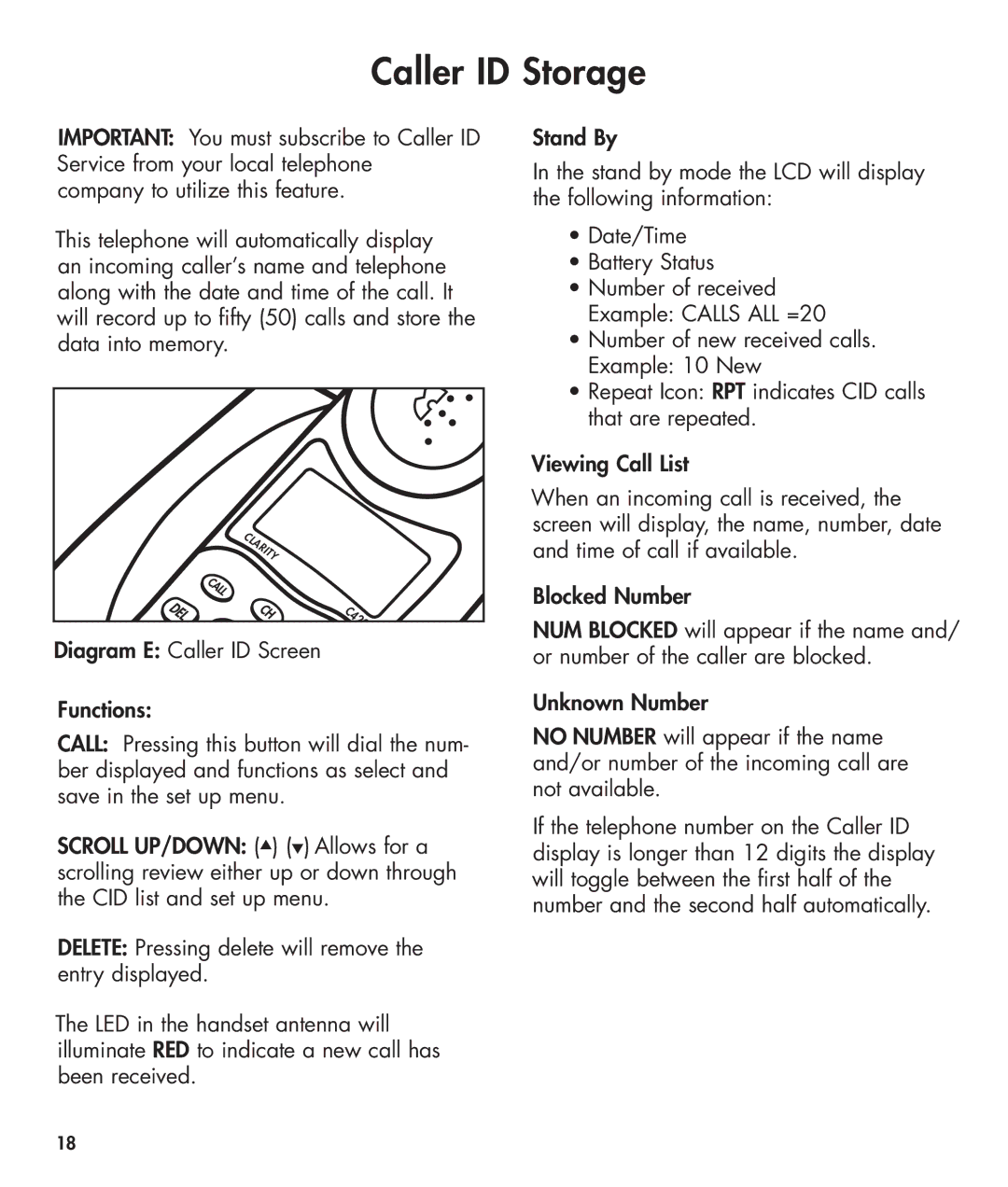420 specifications
Clarity 420 is a cutting-edge telecommunications technology platform designed to enhance communication and data transmission in various industries. Known for its reliability and high performance, Clarity 420 stands at the forefront of modern telecommunications solutions.One of the main features of Clarity 420 is its support for high-speed data processing. This ensures that organizations can manage large volumes of data efficiently without experiencing latency or interruptions. With the adoption of advanced algorithms and state-of-the-art hardware, Clarity 420 promises seamless data flow, allowing users to conduct real-time analytics and decision-making processes.
Security is a significant characteristic of Clarity 420. With increasing risks associated with cyber threats, the platform integrates robust encryption protocols and authentication mechanisms, safeguarding sensitive information during transmission. This is particularly vital for industries where data privacy is paramount, such as healthcare and finance.
Another noteworthy technology utilized in Clarity 420 is its adaptive network architecture. This technology enables the platform to self-optimize based on real-time traffic conditions, ensuring that bandwidth utilization remains efficient. As a result, users experience uninterrupted service, even during peak usage times.
Clarity 420 also emphasizes interoperability, functioning seamlessly with various existing communication systems. Whether it’s a legacy system or a newer technology stack, Clarity 420 can integrate effectively, minimizing the disruption during implementation. This feature is particularly attractive for businesses looking to upgrade their communication infrastructures without completely overhauling their current systems.
Moreover, the platform is designed for scalability. As organizations grow, their communication needs evolve. Clarity 420 can easily adapt to increased user demands, making it an ideal choice for businesses of all sizes. The flexibility in scaling not only saves costs but also enhances overall efficiency.
In addition to its technical capabilities, Clarity 420 offers a user-friendly interface that simplifies interaction for end-users. Intuitive design reduces the learning curve for operators and enhances productivity.
In summary, Clarity 420 stands as a pioneering solution in the telecommunications landscape, characterized by features such as high-speed processing, enhanced security, adaptive architecture, interoperability, scalability, and user-friendly design. By leveraging these technologies, businesses can achieve improved communication effectiveness and operational excellence, positioning themselves for success in an increasingly connected world.

